*This post is sponsored by Wood, Naturally.
When planning your deck project, there are many factors to consider. Cost is typically the first thing to consider, while choice of material is a close second. The type of material you choose may be dependent on your budget. In this post, we’ll take a look at two types of decks a $10,000 budget will allow.
Last summer, we built a floating deck and pergola and we chose to use pressure-treated lumber for many reasons. Mainly, to keep our costs down, but also because we absolutely love the warmth and character that natural wood brings to a space.

Manufactured materials, such as composite decking is made up of plastic material and wood fibers. The appeal of composite decking is that it’s virtually maintenance-free, but this convenience usually comes at a much heftier price tag.
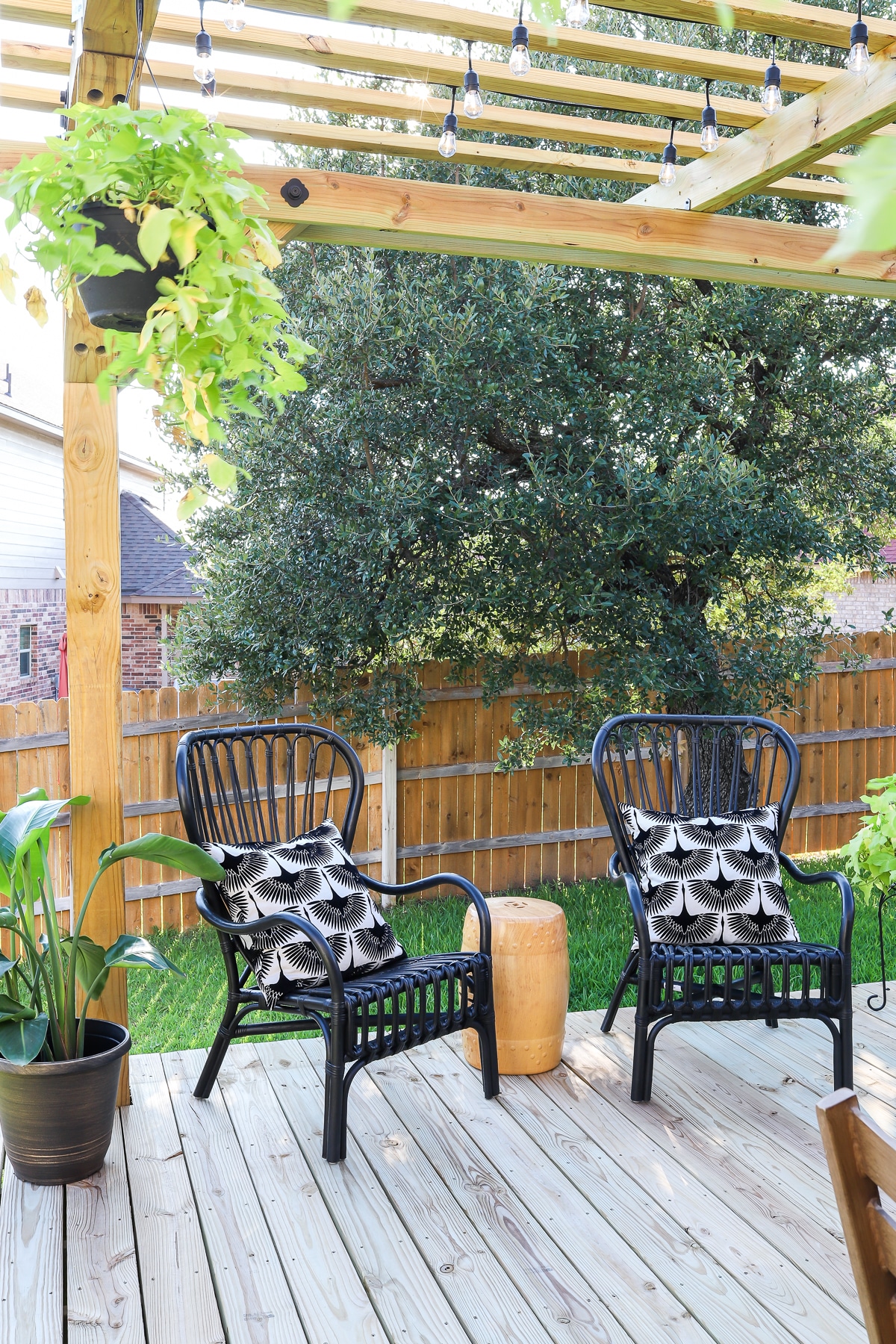
Cost per square foot
Pressure-treated wood is about $17 to $25 per square foot.
Composite runs about $32 to $45 per square foot.
So what kind of deck can you get on a $10k budget?
Here’s a ballpark breakdown of each:
- Pressure-treated: ≈ 400 to 575 square foot deck
- Composite: ≈ 220 to 310 square foot deck
As you can see, a natural wood deck can be half the price of a deck made of composite material. To help visualize what a $10,000 deck would look like, I’ve sketched out a couple of designs.
The model below shows a 23 x 23 foot deck (529 square feet). This deck would be possible if built with pressure-treated lumber. Pretty luxurious, right? I’d love to have this outdoor space in my backyard! Look at all that space – there’s ample room for lounging, grilling, and dining!
Now let’s see what a $10k composite deck would look like. The model below is a 12 x 20 foot deck (240 square feet). Obviously, the composite deck is much smaller – the natural wood deck is more than twice the size of the composite deck!
Which deck would you choose?
If you’re wanting the most ‘bang for your buck’, I’d recommend natural wood over composite decking any day of the week. Additionally, the warmth, character, and texture that real wood brings to a space is beautiful and unmatched.
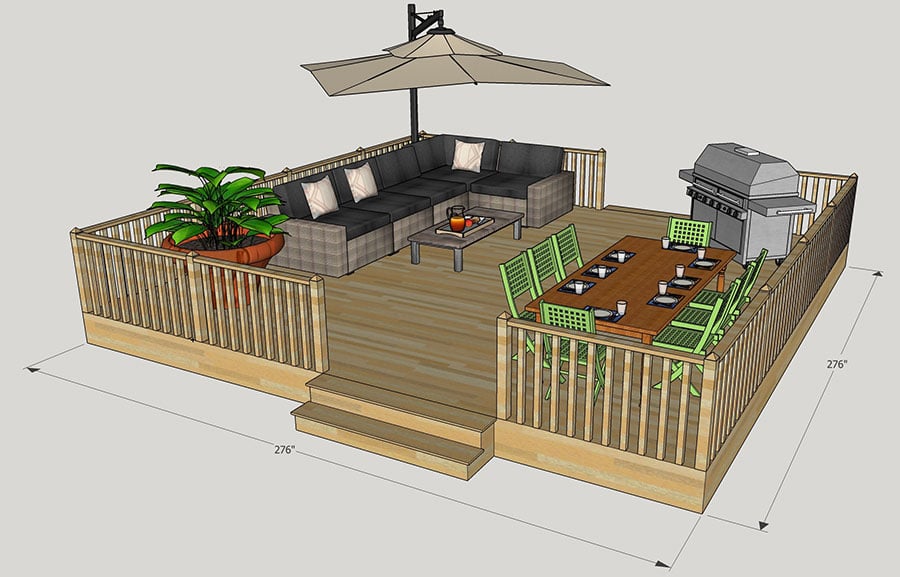
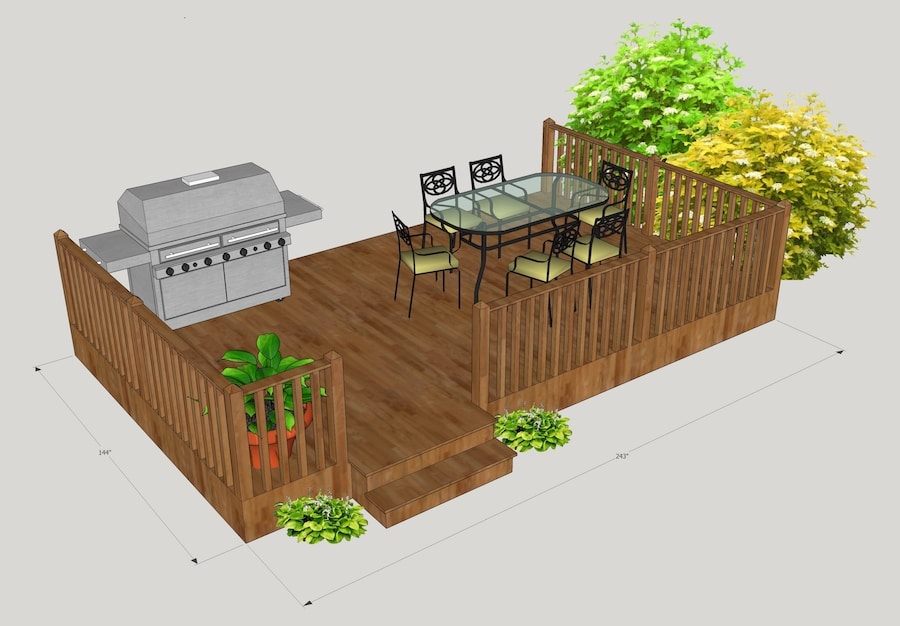


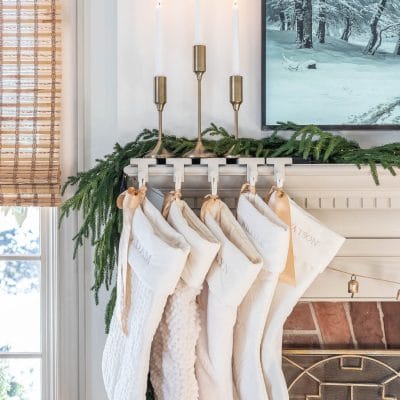
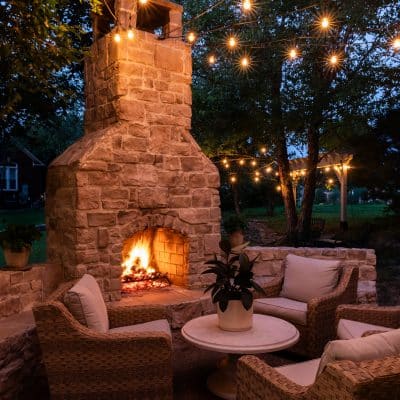
Great points, but you left out upkeep. Natural wood looks great the first year or two, but after that it starts looking terrible (splinters, warping in the sun, need to seal and sand every few years) pretty quickly. When we were deciding between wood and composite everyone we know who had a wood deck told us to spend the money upfront and go composite. Putting in a composite deck with vinyl railing, was the best choice we ever made. We just wash it a few times a year and it looks great.
Thanks for your comment, Erin. Yes, composite is virtually maintenance-free, as I said in the article, however you certainly pay for convenience. Glad to hear it’s working for you! I personally love the organic look of natural wood and really like that it can be stained any color, whereas composite material is limited in styles and colors.
I love the larger natural wood deck for the aesthetics and size. I don’t think I would mind the occasional upkeep with being able to enjoy that year round.
On a different note… I am in the process of converting an old house into a small restaurant and was wondering your thoughts on outdoor pergola material for natural beauty and longevity? Also..would you share your font for your logo? I love it.. I’m researching for my new place 🙂 Thanks!
Thanks for your comment, Diane! Cedar and redwood are both popular choices for pergola material – beautiful, long-lasting, and natural! I actually don’t know the name of the font… my developer designed the site.
We just finished replacing our rotted wood boards with composite. We used the existing pt framework which was in fine condition. The composite cost us $7000. It was 1000 sq. feet, yes 1000 sq ft! We did the labor ourselves. Composite has really come down in price and it also adds value to your home. I am so happy to not be a slave to the wood anymore.
What is the name of the composite, the width, and the thickness?
I have built some awesome looking treated decks over the years, only to go back a couple years later to see deck boards twisted and shrunk to unacceptable standards. I will still build with treated wood as long as the homeowners know what to expect. But my recommendation will be composite.
Usually i didn’t comment on any blog but after reading your article i loved it and i can’t stop myself by commenting on it. It’s a great job.
Thank you for sharing these deck designs We are working with a blank canvas and were just having this discussion. Although i am nervous about the maintenance aspect we are going natural because we can get more for less and I love the look of wood. DO you have a recommendation of where else to look at low level deck designs? We are adding on a deck to a ranch.
the designs are great and it is very ideal for a backyard deck and it is nice to put small detail of green plants to add different vibe to it.